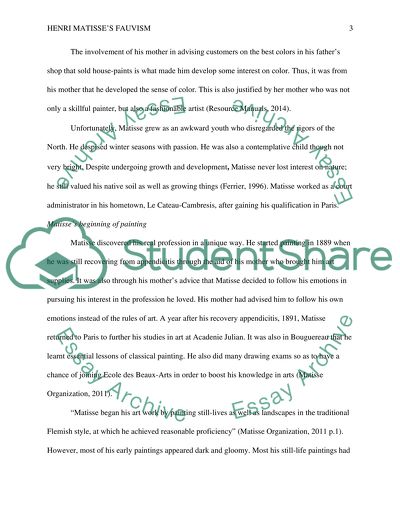Cite this document
(“Henri Matisses Fauvism Research Paper Example | Topics and Well Written Essays - 1750 words”, n.d.)
Retrieved from https://studentshare.org/visual-arts-film-studies/1646840-henri-matisses-fauvism
Retrieved from https://studentshare.org/visual-arts-film-studies/1646840-henri-matisses-fauvism
(Henri Matisses Fauvism Research Paper Example | Topics and Well Written Essays - 1750 Words)
https://studentshare.org/visual-arts-film-studies/1646840-henri-matisses-fauvism.
https://studentshare.org/visual-arts-film-studies/1646840-henri-matisses-fauvism.
“Henri Matisses Fauvism Research Paper Example | Topics and Well Written Essays - 1750 Words”, n.d. https://studentshare.org/visual-arts-film-studies/1646840-henri-matisses-fauvism.


